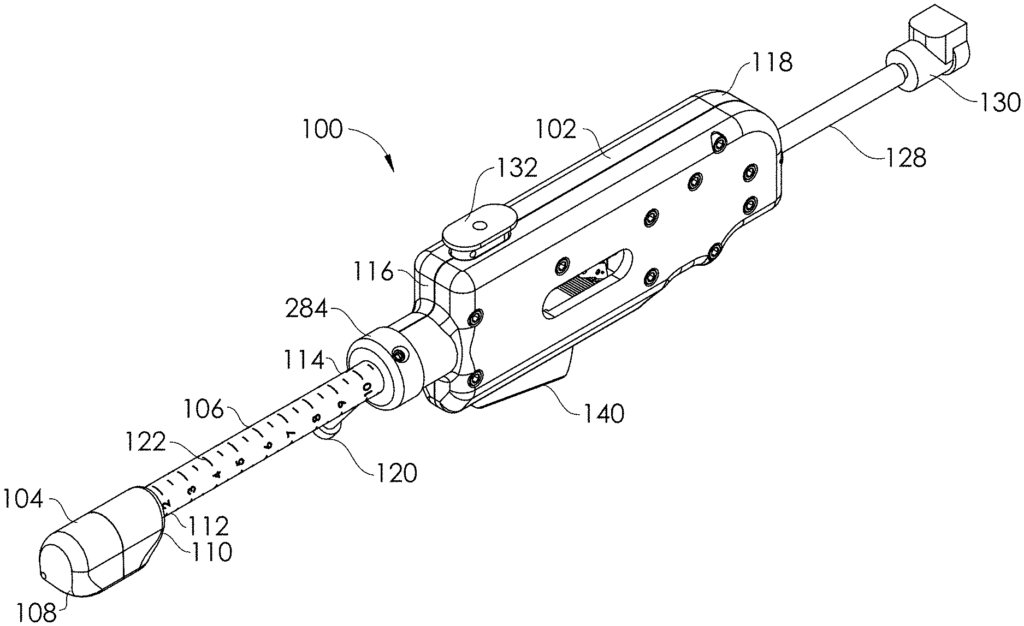Advanced Systems for Precision Tissue Closure in Surgery
Introduction
Surgical procedures often require precise and reliable tissue closure to ensure proper healing, minimize infection risk, and promote optimal recovery. Traditional sutures and staples, while effective, present challenges, including potential tissue damage, inconsistent results, and extended healing times. Our patented systems and methods for closing portions of body tissue introduce an innovative approach that enhances precision, safety, and efficiency in surgical closures. This technology offers surgeons a sophisticated tool to achieve more consistent outcomes in both open and minimally invasive procedures.
The Need for More Effective Tissue Closure Techniques
In surgeries, whether major or minor, one of the key aspects influencing patient recovery is how the incision or wound is closed. Improper or suboptimal closure can lead to complications such as infection, delayed healing, or wound dehiscence. Traditional methods such as suturing require manual precision and skill, and while effective, can cause additional trauma to tissues, leaving the wound more vulnerable to infection or scarring.
For healthcare providers, ensuring a consistent, efficient, and minimally invasive method of tissue closure can significantly improve patient outcomes, shorten recovery times, and reduce the likelihood of post-operative complications. This is particularly important in complex procedures, where reducing the impact on healthy tissue is critical.
A Modern Solution for Surgical Tissue Closure
Our patented system for closing portions of body tissue offers a highly advanced method for achieving precision closures during surgeries. Using this system, surgeons can apply a mechanical closure that aligns tissue accurately and securely, ensuring minimal trauma to the surrounding area. The technology can be adapted for both open and minimally invasive procedures, offering versatility across a wide range of surgical applications, from organ repair to soft tissue reconstruction.
The system is designed to minimize tissue damage while offering a quicker and more reliable closure process. This leads to faster healing times and reduces the risk of complications such as infection or scarring. The method’s adaptability makes it a valuable addition to surgical procedures where precision is critical, including cardiovascular, gastrointestinal, and cosmetic surgeries. Additionally, it can be integrated into robotic-assisted surgeries, providing even greater control in minimally invasive settings.
Key Benefits
- Enhanced Precision: Provides surgeons with a highly controlled method for closing tissues, reducing the risk of errors or inconsistencies.
- Minimally Invasive Option: Ideal for use in both open surgeries and minimally invasive procedures, offering flexibility in various surgical settings.
- Improved Healing: Promotes faster tissue recovery by minimizing trauma and ensuring a more consistent closure.
- Reduced Complication Risk: Lowers the likelihood of post-operative infections, scarring, and wound complications.
A Critical Advancement for Surgical Excellence
Licensing this system for tissue closure provides medical device companies and healthcare providers with a powerful tool to improve surgical outcomes. Its precision, versatility, and ability to enhance patient recovery make it a valuable addition to modern surgical practices, contributing to safer and more efficient procedures.

- Abstract
- Claims
What is claimed is:
1. A system for closing a blood vessel, comprising:
16. A method for closing a blood vessel comprising:
providing a system for closing a blood vessel comprising:
Share
Title
Systems and methods for closing portions of body tissue
Inventor(s)
Bradley S. Culbert, Bartosz Bojanowski, Eric Rowson
Assignee(s)
Orpheus Ventures LLC
Patent #
11497507
Patent Date
November 15, 2022
